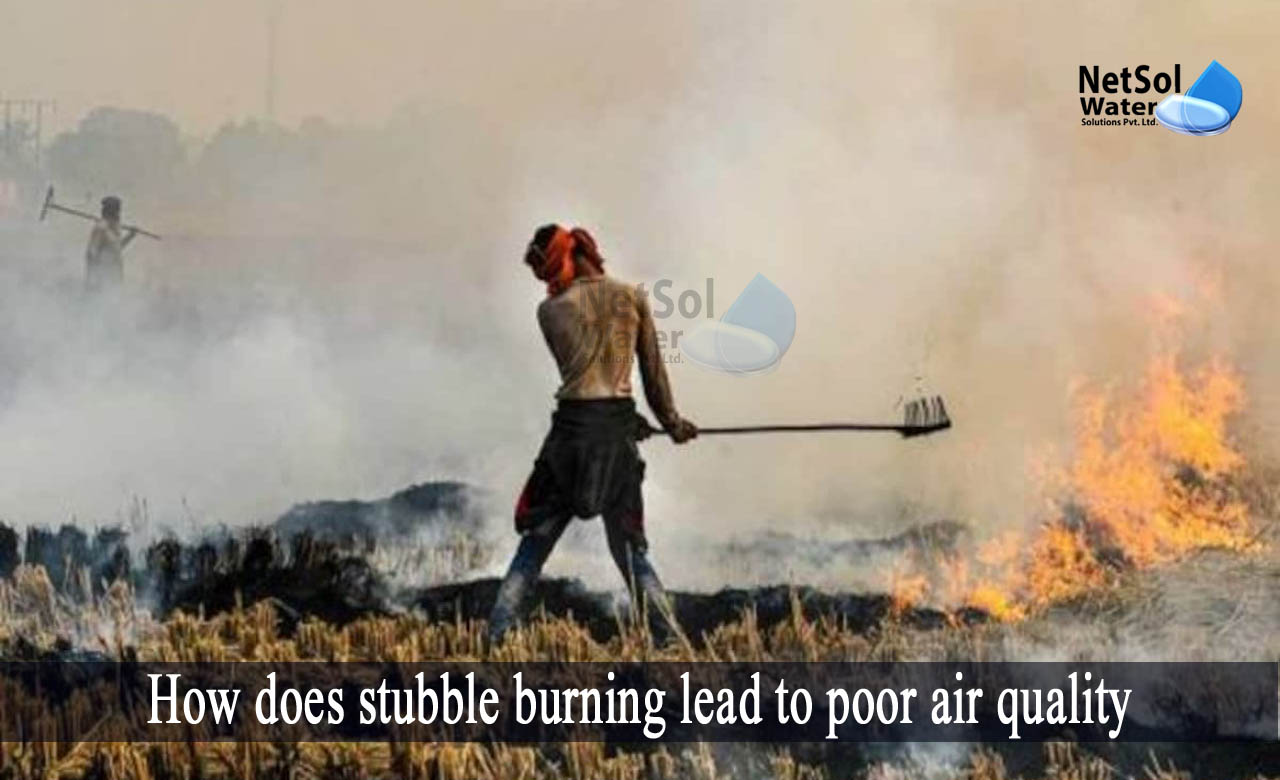Due to the short window of time between the harvest of rice and the seeding of wheat in November, stubble burning is a frequent method used by farmers to prepare fields. However, it has a detrimental effect on the environment because it increases the number of airborne contaminants, which leads to air pollution.
How does stumble burning cause air pollution?
Open stubble burning releases a lot of dangerous pollutants into the sky, including carcinogenic polycyclic aromatic hydrocarbons, volatile organic compounds (VOCs), methane (CH4), and carbon monoxide (CO).
A major pollutant in Stubble burning!
The air becomes more polluted when straw is burned, and sulphates, nitrates, and metals are released into the atmosphere, as a result of the burning process. This could have a serious negative impact on one's health.
Experts estimate that over the 29–30 lakh hectares where paddy is grown each year, burning straw burns out about 1 lakh tonnes of nitrogen, 0.5 lakh tonnes of phosphate, and 2.5 lakh tonnes of potash in the soil.
Can Delhi's pollution be affected by stubble burning in the Punjab region?
After the paddy harvest, farm fires in Punjab and Haryana are one of the main causes of wintertime air pollution in Delhi NCR.
Data from the Ministry of Earth Science show that up to 32% of the microscopic PM-2.5, lung-damaging pollutants were caused by farm fire smoke.
Impact of stubble burning to Delhi's air quality
The effect of stubble burning on Delhi's air quality is influenced by a combination, of high wind speeds at intrusion height, wind direction, and air residence time in the Delhi airshed, in addition to the amount of biomass burned in Punjab and Haryana.
Data from the CPCB shows that following Punjab's stubble burning, Delhi's AQI (air quality index) dropped to 415 from 447.
Is stubble burning a seasonal problem for Delhites?
After Diwali, pollution levels suddenly increased, but everyone anticipated this for the obvious reason that October's abundant rains prevented farmers from burning their crops. As a result, stubble burning is a seasonal issue that, during the time when it is most common, may account for 20% to 50% of the total air pollution loading.
The overall air quality fluctuated over this time, going from a "poor" Air Quality Index of 300 PM-10 to a "severe" Air Quality Index of 551 PM-10. Experts added that a significant factor in Delhi's pollution levels was the intensity of burning, as well as the wind's speed and direction.
Burning of Stubble: Potential downsides
• The biggest source of air pollution, which accounts for 20% of the particulate matter emissions throughout the winter, is the burning of crops.
• Burning stubble causes the soil to lose nutrients, increasing the need for fertilizer and having an effect on the soil's flora and bacteria.
• Because, of the floating threads of conducting waste, it mostly damages electrical and electronic equipment, and there is a danger of out-of-control fires.
• Diminished soil structure (soil aggregate stability).
• Electrical and electronic equipment is mostly damaged by floating threads, of conducting rubbish in stubble burning.
Conclusion
The main factor contributing to air pollution, and decreasing air quality is the burning of the agricultural waste.
It influences the Air Quality Index (AQI) in the national capital and NCR together, with traffic emissions. Farmers in Haryana, western Uttar Pradesh, and Punjab in northern India are said to be a major contributor, to the air pollution in Delhi and the areas around.
How can we assist?
Netsol Water is dedicated to offering practical solutions for air pollution management, thus, safeguarding the world's most valuable resource, the air. We provide biofilters, scrubbers, incinerators, and many more to control air pollution in Delhi, and other cities of India.



